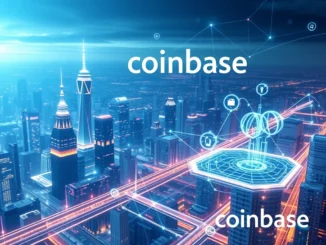
Big news for the XRP Ledger community! David Schwartz, the Chief Technology Officer at Ripple, recently shared a significant update at the APEX 2025 conference in Singapore. He announced that the much-anticipated XRP Ledger EVM-compatible sidechain is on track to go live in the second quarter of the year (Q2).
What is the XRPL Sidechain and Why Does it Matter?
For years, the XRP Ledger (XRPL) has been known for its speed and efficiency in processing payments. However, it hasn’t natively supported the complex smart contracts and decentralized applications (dApps) common on platforms like Ethereum.
This is where the XRPL sidechain comes in. Think of it as a separate, but connected, blockchain that runs alongside the main XRP Ledger. The key feature of this sidechain is its EVM compatibility.
EVM Compatibility: Bridging Worlds
EVM stands for Ethereum Virtual Machine. It’s the computational engine that powers Ethereum, allowing developers to build and deploy smart contracts using languages like Solidity. By making the XRPL sidechain EVM-compatible, it effectively allows developers to:
- Port existing Ethereum-based dApps to the XRPL ecosystem with minimal changes.
- Build new dApps on the sidechain using familiar Ethereum tools and languages.
- Enable assets, including XRP, to interact with these smart contracts and dApps.
This compatibility is a crucial step in expanding the functionality and appeal of the XRP Ledger beyond payments.
Opening Doors to XRP DeFi and More
One of the most exciting implications of this development is the potential for XRP DeFi. Decentralized Finance (DeFi) has become a massive sector within the crypto world, offering services like lending, borrowing, trading on decentralized exchanges, and earning yield through liquidity provision.
With the EVM sidechain, users will be able to participate in these DeFi activities directly within the XRPL ecosystem. This means:
- Using XRP or other assets on the sidechain in lending protocols.
- Providing liquidity to decentralized exchanges built on the sidechain.
- Interacting with various smart contracts to potentially earn yield.
This integration could significantly boost activity and utility for XRP and the XRPL network.
The Journey So Far: Testnet Success
According to reports, the testnet version of the Ripple EVM-compatible sidechain, which launched earlier this year, has already shown strong growth and activity. A successful testnet phase is a positive indicator, suggesting the technology is robust and developers are engaging with the platform. This testing period helps iron out potential issues before the mainnet launch.
What This Means for the Future of XRPL
The launch of the EVM sidechain represents a major upgrade for the XRP Ledger. It positions XRPL as a more versatile blockchain capable of supporting a wider range of applications beyond its core payment function. This move could attract new developers, projects, and users to the ecosystem, fostering innovation and growth.
While the primary focus has been on payments, this expansion into smart contracts and DeFi via EVM compatibility opens up significant new possibilities. It’s a clear signal that the XRPL ecosystem is evolving to compete in the broader decentralized application space.
Looking Ahead to Q2
The anticipation is building for the Q2 launch. This milestone could be a turning point for the XRP Ledger, unlocking new use cases and potentially increasing demand and utility for the XRP token within decentralized finance and dApp environments. Keep an eye out for further announcements as Q2 approaches!



